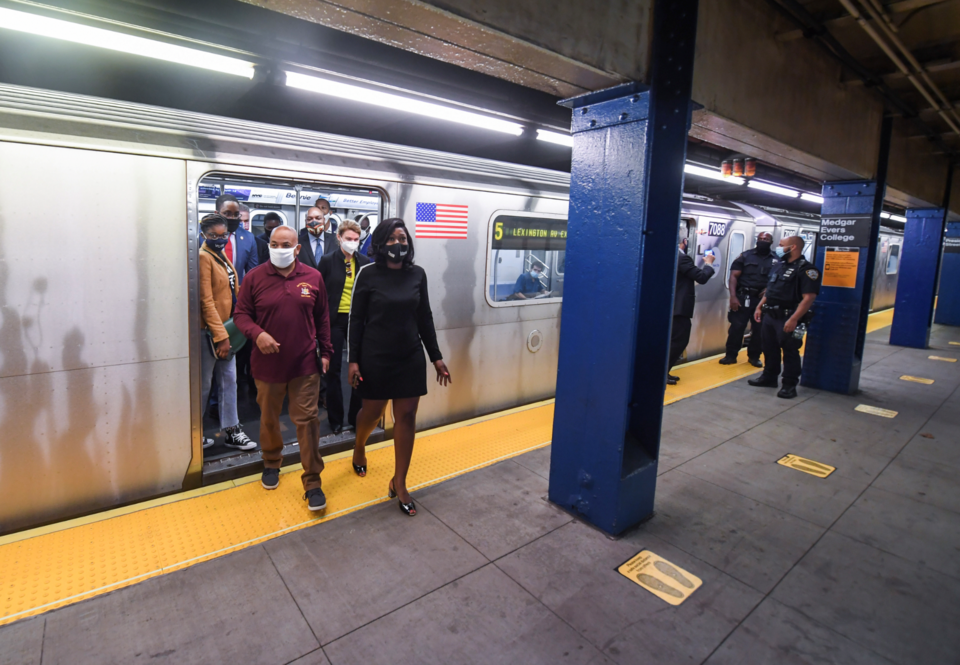By Deena Asghar
New York City thrives on the heartbeat of an underground arterial network that sustains the city's livelihood: the subway.
This transit network, operated by the Metropolitan Transportation Authority, finds itself at a critical crossroad. It wrestles with a pressing and formidable challenge called climate change as the strained infrastructure constantly gets badgered by flooding from relentless storms and downpours.
The city faced unrelenting torrential rain on September 29, resulting in extensive flooding across the metropolitan area. Nearly half of the subway lines experienced suspensions and delays. Many lines were redirected to other routes, significantly disrupting daily commutes for residents. This prompted Governor Kathy Hochul to declare a state of emergency as widespread flooding impacting the city's streets and highways.
Despite this dire situation, New Yorkers are no strangers to storms. Members of the Brighton Beach community were not surprised by the city's slow response. Many local residents have felt that this southern neighborhood has largely been neglected since Superstorm Sandy, an event that occurred over a decade ago.
Many businesses in Brooklyn were trying to recover days after the storm when multiple water pumps broke down and business owners had to replace them on their own.
Superstorm Sandy had spurred the MTA into action with a substantial $8 billion federally-funded repair initiative. According to the Brooklyn Chamber of Commerce, there were more than 130 businesses damaged, with a consensus the failure of infrastructure and drainage by the nearby subway stations casued much of the damage.
Despite these efforts, city officials fail to recognize its vulnerability due to an increase in extreme weather patterns.
In recent years, rising temperatures have created an ideal moisture level in the air, leading to more downpours than anticipated. It's not just a simple weather forecast predicting heavy rain and heatwaves. It is an environmental shift that necessitates urgent infrastructure adaptation to mitigate the risk of continuous flooding that New York City is currently ill-prepared to handle.
Given that storms are not expected to slow down anytime soon, subway flooding will continue to burden hundreds of thousands of New Yorkers, hindering their ability to work, support themselves and their families, leading to loss of income.
What does this uncertainty mean? Can New York City really handle multiple hurricanes a year and what is the future of the MTA system?
An immediate way to mitigate flooding is to have a flood emergency preparedness plan in place before an event occurs by monitoring weather and flood predictions. Adopting effective structural methods is better for long-term mitigation.
In coastal areas such as Brighton Beach and Coney Island, rising sea levels and heavy downpours can flood the sewer system in a short amount of time. Although the city Department of Environmental Protection says it does structural maintenance every day in the sewer system, most flood prevention management relies on the people of New York to make decisions for themselves. This includes emptying basins and being careful about what they pour down the drain.
The Flex-Gate, a tube that can seal a subway entrance that's capable of withstanding 16 feet of water, is one flood prevention tool adopted by the MTA. But this attempt is merely a recognition that the city needs more prevention protocols.
The subways, the arteries of New York, face a precarious future. The urgency for action extends beyond mere transportation concerns. It's about safeguarding the health and well-being of every New Yorker who utilizes this vital system.
New York isn't planning for the future, it's simply reacting to events as they occur.
Deena Asghar is a Brooklyn native and a graduate student at SUNY Downstate Health Sciences University. She is passionate about public health policy and advocacy, with a focus on NYC infrastructure and climate change.




